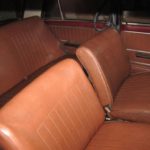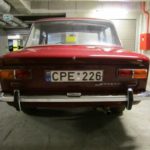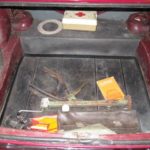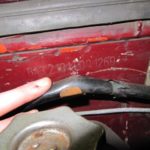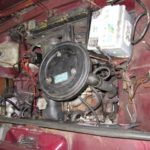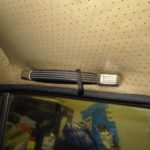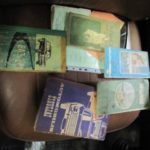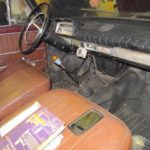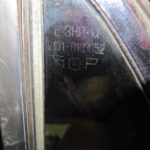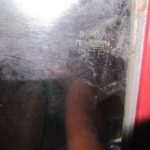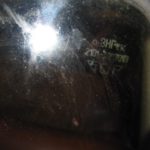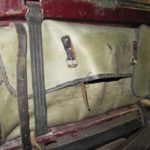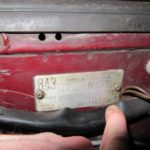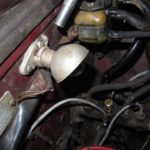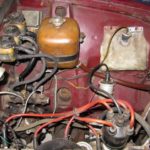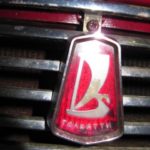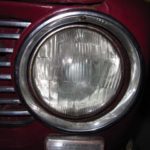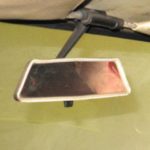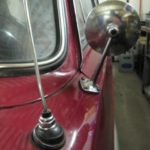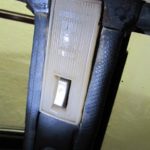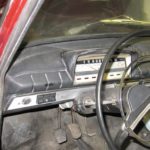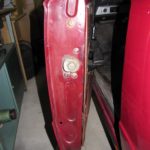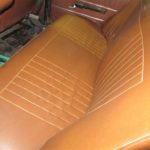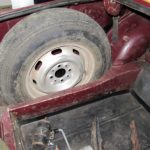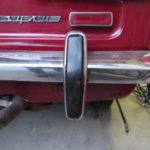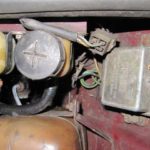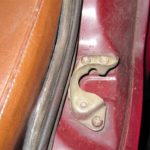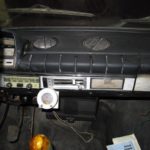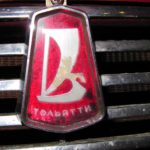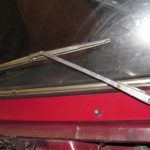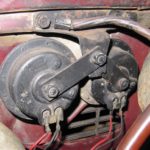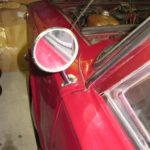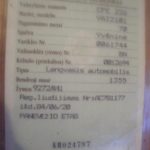Leírás
Az autót Litvániából szereztük egy kereskedőn keresztül, itt olvasható a teljes történet. Az autó alvázszáma 12694, és kézi összerelesséle készült 1970 augusztusában, mielőtt a VAZ-
nál elkezdőpdött a sorozatgyártás. Az autó meglehetősen rossz állapotban van, mindenfelé nem túl szakszerű javítások nyomai és átfestések láthatók. Teljes restaurálást kíván. Van jónéhány alkatrész, jel, ami csak a legkorábbi kézzel szerelt zsigulik sajátja, pl. a Magneti Marelli duda, a "Тольятти" feliratos orrembléma, a furcsa motortér lámpa (lehet, hogy későbbi beszerelés), a "шасси-
chassis" feliart az adattáblán (alvázat jelent), és az 1970-
es ablakok. Az utastérlámpák Fiatok, de nem is akármiylen Fiat, hanem Polski, ahogy valószínűleg az ablaktörlők is. Ezeket hamarosan szovjet, illetve az ablaktörlők esetében magyar termékek váltották. További tipikus korai jelek még a tűzfal közepébe ütött alvázszám mellette a az adattáblával. A lökhárító babák még nem ívesek, hanem kifejezett szöge van a törésüknek, az utastérbeli kapaszkodóknak krómozott takaró végük van. Ezek a jelek megszűntek 1971 március-
áprilisa után. Az emelő zöld és a latin feliratok tanúsága szerint Fiat vagy olasz gyártmány lehet. Sajnos a textil szerszámos hiányzik, az ablakmosó zacskó nem korhű típus, és az egyik legszembetűnőbb korai jel, a lámpafélholdak is hiányoznak, valamint nincs benna kétrészes ventilátor takaró lemez sem. Az AC és a légszűrőházból kijövő levegőcső sem gyári. További korai és nagyon korai Zsiguli jelek a helyzetjelző a fehér index búra alatt (ezért fehér), és a helyzetjelző aljzat nélküli lámpafoncsor (a jobb oldaliban cserélték, mivel benne van). A sárvédőre szerelt háromszög talpú kerek külső, és a fehér peremes belső tükör, a ritka lyukas tetőkárpit, a padlópedál, az ezüst, vékony lámpás műszerfal, a sűrűbordás műszerfalborítás az alumínium díszítéssel, az ívesebb hátsó ülés támla,a kürtkarikás kormány a jobbra lévő piros VAZ felirattal, a piperetükör a jobb oldali napellenzőben, a füles szellőzők, az ajtó oldalába benyomott mélyedések, és a 2101-
es hengerfej. Az eredeti diagonál gumik és a gyári szerelésnek megfelelő Videoton rádió a hangszóróval tökéletes extrák.
The car was obtained from Lithuania via a dealer, here you can read the full story. The car has the chassis number 12694, and was produced by manual assembly in August 1970, before VAZ started serial production. The car is in pretty bad shape, repaired not very professionally in many places and over-
painted all over. A full restoration is in order. It has a number of parts and marks which are only particular to the oldest hand made Zsigulis: the Magneti Marelli horns, the "Тольятти" emblem, the strange engine compartment light (it may be a later addition), the "шасси-
chassis" text on the data table, and windows from 1970. The passenger compartment lights are Fiat, but not any Fiat, Polski Fiat! Most probably the wipers are also Polski Fiat. These soon became soviet or as the wipers, Hungarian products. Other typical early marks: VIN in the middle of the firewall, not at the right side, VIN plate next to it. The bumper "bumps" are not curvy but has an obvious angle. The handles inside has chrome-
plated tips. These are the marks discontinued after March-
April 1971. The hoist is green (not black) and it is most probably Fiat or Italian as there is latin text on it. Unfortunately the textile tool bag is missing, the windscreen washer's bag is not the right type, and one of the most visible 1970-
71 summer sign, the semicircular chrome rims around the front lights are missing, and the cooling fan's two piece cover is also not there. The AC pump and the ventilation tube coming from the air filter housing is not original either. Other very early and early marks include park light in the white blinker (that is why it is white), and main lights without the socket for park lights, (however the right light is with a socket for park light). The round mirrors fixed on its triangular base to the fender instead of the door, the white rimmed internal mirror, the sparse patterned roof coverage, the floor mounted pedal, the silver gauge board with the narrow slits for control lights, the dense stripes on the dashboard and the aluminium inner trim, the curvy back seat, the horn rim and the red VAZ text to the right on the steering wheel, the mirror in the sun deflector, the little handles on the ventilation shaft covers, the two depression on the front doors' narrow side, the 2101 cylinder head. The original cross-
ply tires and the original Videoton radio+speaker are a great extra.
Galéria
